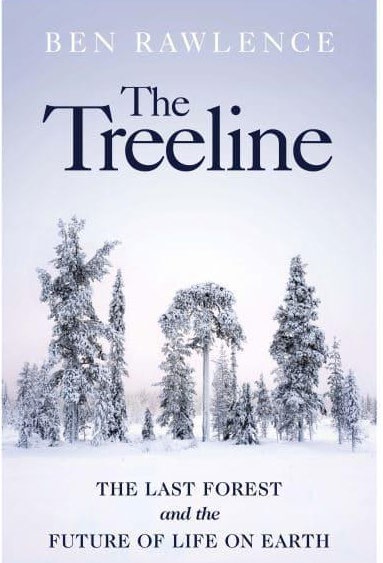From Living Woods magazine issue 63
A woodland manager in Scotland, JOHN CAMERON absorbs the lessons from this assessment of how climate change is affecting the northern forests of the world

THE TREELINE
The Last Forest and the future of Life on Earth
Ben Rawlence
Jonathan Cape
Hardcover
352 pages
RRP £20
ISBN 9781787332249
Having listened with great interest to the serialisation of this work on Radio 4, my interest was stirred to seek this book out and learn what else it had to offer. The short answer is, an amazing amount!
Almost all the evidence is pointing inexorably toward a warming world, with its negative impacts broadly accepted. What is much less considered is the reality of these rising temperatures in real and comprehensible terms that resonate. The Treeline will ring true with anyone who has an interest in the northern forest. The Boreal forest and its fringe with the Arctic treeline are just one of the many frontiers of a wooded boundary that is under stress as it is forced to adapt to the changes that are already happening.
Ben Rawlence takes us on a journey around the globe within the northerly latitudes of the forestry necklace that the planet wears. He introduces his readers to different countries which are all experiencing dramatic changes, and he recounts how they are being felt, not just by the ecology but also by the human populations that dwell in these areas.
From some of Scotland’s diminished and now diminutive ancient forest, through Scandinavia, the Russian Federation and on through Alaska and northern Canada, the author paints a clear picture. He tells the story of the people who are at the forefront of the change and how it is affecting their current way of life, as well as the outlook for the future, which is often bleak.
Painstakingly researched, with much time spent travelling in the harsh conditions of the upper latitudes, the author conveys the magic and vitality of this seemingly desolate world with an expansive range of personal experience, gained through the earned trust of the indigenous people.
What is clear is that the natural world is not waiting for mankind; the trees are on the move in a vision almost from Tolkien. Pioneering species are stealing a march, establishing themselves further and further north in response to warming conditions. This rapid colonisation of hitherto frozen land is pushing the native ecology further north, with all that entails.
The result of the author’s work is an engaging and illuminating account of the effects that the northward moving treeline is having on human beings, animals and the wider planet. Unfortunately, it would appear that not all new tree growth and forest expansion is necessarily beneficial.